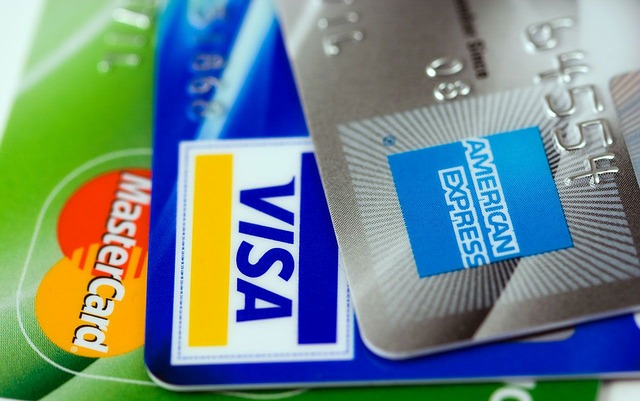Dave Ramsey’s 7 Baby Steps for Saving Money, Paying Off Debt, and Building Wealth
Dave Ramsey is a popular radio show host, an author of several books about financial management and developing life skills. Besides being a great teacher, he is also, not coincidentally, a successful businessman and a devout Christian. His Financial Peace University course has been completed by over 4 million people. Ramsey’s formalized and systemized financial advice, built upon Christian principles of self-discipline found in the Bible, includes a formula for changing poor money management habits into a lifestyle that includes saving money, paying off debt, and building wealth. The seven foundational steps of his financial program are called Dave Ramsey’s 7 Baby Steps.
The 7 Baby Steps process developed by Dave Ramsey is not intended to simply get a person out of debt, but to change someone’s behavior and help a person live prosperously, including being generous with the wealth built through following the 7 Baby Steps and following other advice offered by Dave Ramsey.
This 7 Baby Steps process for saving money, paying off debt, and building wealth includes these steps:
- Baby Step 1 – Emergency Fund: Start by saving and putting away $1,000 in to its own separate account to be used only for emergencies.
- Baby Step 2 – Pay off Debt: Use the debt snowball approach to pay off debts, beginning at the smallest and working up to the largest.
- Baby Step 3 – Expense Fund: Save enough money to cover 3-6 months of expenses.
- Baby Step 4 – Begin Investing: Invest 15% of your income into Roth IRAs and pre-tax retirement funds.
- Baby Step 5 – College Fund: Set aside money for your children to attend college using 529 college savings plans or Educational Savings Accounts (ESAs).
- Baby Step 6 – Pay Off Home: Avoid wasting money on mortgage interest payments by paying as much as possible to get rid of your mortgage.
- Baby Step 7 – Build Wealth: Put your money to work and build wealth while also contributing to charitable causes and to your posterity.
I will walk through the details of these 7 baby steps, describing the rationale behind them (including their respective orders in the list) as well as adding my input based upon my own experience with making, saving, and managing money.
Spending and Debt Problems in America
It’s no secret that Americans have a spending and debt problem. In the first of this year (2018), we spend happy Americans collectively reached an all-time high of $13.2 trillion in US household debt.
The spending problem among American households really can be attributed to the rapidly increasing thirst for short-term pleasure at the expense of long-term health and prosperity. It’s the same mentality that causes people to eat the food that makes them fat and unhealthy, to cheat on their spouses or to view pornography, and to otherwise abandon the Christian ideals that made America the most powerful and wealthiest country in history.
The modern trend towards short-term satisfaction at the expense of ultimate success and prosperity makes it feel like our country and others who depend in any way upon our continued economic leadership are living on borrowed time.
That’s why it’s up to you, the reader of this article, to put your financial house in order and become part of the solution rather than exacerbating the problem.
My Own Background with Savings, Debt, and Wealth Building
I grew up in a family with poor to average means. My dad always worked his tail off, but he’s just a simple guy who usually finds himself in jobs that involve more manual than intellectual labor, and those most often pay less.
Because of our limited income, my parents were typically very frugal and cautious with their money while I was growing up. I adopted those habits when I became an adult. I’ve always had a very healthy fear of being in debt to anyone for any reason.
During and after high school, I saved over half of the money ($6,500 out of $10,000) necessary to allow me to serve as a volunteer for my church for two years following my becoming an adult. When I returned from my volunteer service at age 21, I was told I needed to educate myself by going to college, but I was not at all interested in financing any part of a college education. My approach instead was to work as I went, pay for whatever expenses I incurred, and
Later, when I got married, I started a business with my wife, and we together made a financial plan that centered on a 10-year goal to become financially independent, which would give us freedom to travel, to spend more time with however many kids we would have (it’s turned out to be 6 so far), and allow us to develop talents and skills (ones necessary for starting a family bluegrass band, for instance) that only can be obtained if you’re not completely absorbed in trying to just pay the bills every month.
My financial path has not had to take me through these specific 7 Baby Steps steps myself, because I’ve naturally saved money and have never been in debt. As I’ve grown older, I’ve realized that it highly unusual for the majority of Americans. Much of the influences from our contemporary society have taught us to get into debt. We expect people to have student loans, car payments, and to buy Christmas gifts using a credit card. You can expect that the habits you’ll develop from following a formula like Dave Ramsey’s 7 Baby Steps will make you unique and different from your peers. And that’s perfectly okay.
If you feel like you’re naturally configured to be both a prodigious earner and a saver, these steps may not be as useful to you as for the other 90% of people for whom it’s not as natural to increase their earnings and discipline themselves to save money. However, there is something to be gained by everyone in the process Dave Ramsey has developed to do the most good for the most people financially.
Baby Step #1: Save $1,000 to Start an Emergency Fund
A survey by the Federal Reserve published in 2017 found that 35% of respondents said they would not be able to pay all of their bills if they encountered an emergency that cost $400 or more. In other words, over a third of us are living so close to the edge that it would only take a small bump to knock us off.
In Dave Ramsey’s Baby Step 1, the objective is to save $1,000 to put into an account that’s separate from your regular operating savings or checking account. The purpose of setting aside that initial $1,000 is to keep you from having to go into anymore debt. It is a small buffer against Murphy’s Law, which essentially says that, if given any chance, whatever can go wrong will go wrong.
One of the major effects of starting off the steps to saving and paying off debt with this $1,000 emergency fund approach is it changes a person’s perspective on how to handle money. While it is highly attainable ($1,000 is really not that much money), taking the step of assertively putting $1,000 acts as a sort of financial repentance, a way of acknowledging that your habits and attitude have not been responsible.
Starting your financial turnaround by $1,000 also gives you a boost of confidence that you can accomplish the next goal, the next baby step, and the next one after that until you attain the fulfillment of your wealth building objectives.
There may be some question about what specifically this $1,000 emergency fund should be used for. What if your car breaks down and you have no way to get to your job? The $1,000 emergency fund should be able to cover that. But what if you find 50% tickets to Disneyland, and you’ve always wanted to take your family there? Well, that’s not what the emergency fund is for. In the Dave Ramsey approach to having an emergency fund, you need to ask yourself three qualifying questions before you decide to pull money from your emergency fund:
- Is it unexpected?
- Is it necessary?
- Is it urgent?
If your answers to those three questions are “yes”, then it’s time to make use of the emergency fund. This time, you won’t have to put the expense on credit.
In a situation where you’ve spent any portion of your emergency fund, you should immediately, or as soon as possible, replenish the fund so that you’re once again in a state of being prepared for the next emergency.
Baby Step #2: Pay Off Debt Using the Debt Snowball Method
After you’ve saved $1,000 and put it into an emergency fund, you now have enough of a cash cushion to take the next step: paying off your debts.
The most effective method for paying of debt is to use what’s called the debt snowball. Instead of paying the same amount towards all of your debts, you prioritize paying on the smallest ones until you’ve paid them off. Then you move on to the larger debts, and so on until you’ve paid them all off.
Here is a quick review of the debt snowball method.
- Make a list of all your debt (aside from your mortgage, which is classified as different from consumer debt)
- Make minimum payments on all of your debts except for the smallest. Pay as much as possible on your smallest debt to get rid of it. Save money wherever possible and repurpose it towards this debt.
- Once you’ve knocked out the smallest debt, move to the next smallest one, and use the same intensity (low maintenance lifestyle and earning extra money) to get rid of that debt.
Using this approach has been a proven effective strategy to pay off debt.
As you’re working through beating down your various debts, it’s important to understand the importance of paying even $1 extra to exterminating debt today or this month versus allowing that principal amount of the debt to accumulate any more interest. Outside of your normal job, there are other ways to earn income that can be applied to your debt snowball routine. I’ve written about how you can do article writing from home in your spare time as a way to continue dousing your debt until the fire is out. In today’s economy, there are too many opportunities to make whatever extra money you want if you’re serious about taking control of your financial future. It’s all about trading non-productive hours for those that provide income for you.
Baby Step #3: Save 3–6 Months of Expenses for Emergencies
This step is similar to Baby Step #1, establish an emergency fund . The big difference is that you’re now able to look further into the future and anticipate larger emergencies. Planning ahead in your expenditures gives you more control over your life.
In order to complete this step, it’s time for you to get much more serious about budgeting. Dave Ramsey’s organization has created an easy-to-use, free budgeting application called EveryDollar to make living on a budget easier for you and your family. Even if you simply use spreadsheets or just plain paper and pen, disciplining yourself to use a budget will simply apply intelligence and inspiration to the system of money that’s coming in and the money that’s going out from your household.
When you’ve completed Baby Step #3, you will have the equivalent of 3-6 months worth of expenses in a separate account. This will help protect you against a job loss or other major issues that could otherwise jeopardize your ability to complete all of these steps.
Baby Step #4: Invest 15% of Your Household Income Into Roth IRAs and Pre-Tax Retirement Funds
This is where things get fun. Your money will now begin going to work for you. If you have made it this far, you have separated yourself financially from the 80.9% of Baby Boomers, 79.9% of Generation Xers, and 81.5% of Millenials who are currently in debt.
Investing in pre-tax retirement funds should allow your money to earn the most for you so that when you’re ready to retire, you’ll maximize how much is available for you to use in your golden years.
The most obvious investment to be made in this step is to match your employer’s 401k program if one is available from them, because of advantage of having your employer match your contribution. Large employers often match your 401k contribution up to 6% of your salary. That match essentially means free money for you because of being disciplined enough to defer the use of some portion of your income until retirement.
There are lots of decisions to be made in this investing baby step, which means it’s critical to become educated, and to get some help from an expert. Dave Ramsey’s team provides a directory of vetted investing professionals to help people find ones that subscribe to their conservative approach to finances.
The general investing recommendation for Baby Step #4 is that you spread your tax-deferred investment money among mutual funds that span the growth side of the mutual fund spectrum, including investing in growth, aggressive growth, growth and income, and international funds.
Baby Step #5: Save for Your Children’s College Fund
This step obviously assumes that you have children, and that you are interested in giving them a leg up when it comes to their ability to obtain an education to propel them towards success without going into debt. If you ever listen to Dave Ramsey’s radio show for any length of time, you’re likely to hear people calling in with stressful stories about trying to pay off student loans.
Forbes reported in May, 2018 that the US student-loan debt crisis is “even worse than we thought”, explaining that college graduates are defaulting on their loans at very high rates. College is becoming increasingly more expensive and altogether unaffordable.
Starting a college savings fund, either a 529 college savings plan or through other Educational Savings Account vehicles, should allow your kids to avoid the trap that so many are falling into with higher education, and that seems to be only getting worse.
While we’re on this topic, I will mention that an effective way to mitigate the cost of college is to have you kids take college courses while they are at home, including online curriculum that can help them finish some or all of their undergraduate degree requirements without even having to step foot on a college campus, where the debt seems to rack up much more quickly.
Baby Step #6: Pay Off Your Home Early
Differing from what the more aggressive financial advisers recommend, paying off your home has a lot of advantage, including the security of knowing that, aside from property taxes to your local county, you owe no entity for your housing.
Similar to Baby Step #2, paying off the mortgage (which is often looked at as the “good kind of debt”) should be done quickly and by putting as much money toward principal payments as possible as early as possible. Dave Ramsey recommends refinancing from 30-year and interest only loans to 15-year loans that cut out a lot of the interest that is typically paid on a mortgage and instead move that money towards investment and wealth building.
Baby Step #7: Build Wealth and Give
This step is the culmination of Dave Ramsey’s 7 Baby Steps to financial freedom. Building wealth involves putting your money to work in places that align with your risk tolerance. Often real estate (especially rentals or purchasing in growing market segments where values are consistently going up) and other safe investments are good places to build wealth.
In this wealth building step, it becomes your opportunity to give back, both through money and through volunteering and mentoring others, including your own posterity.
In our family, we have a set of charities we choose to donate to, including paying a tithe and fast offerings (we skip two meals and donate at least the value of those meals) to our church. We also participate in charities such as Operation Smile and others whose mission and administration we believe in. We are careful to always involve our kids in our giving efforts, including having them earn money to contribute to charity.
Giving Back Works
One thing that has felt like wealth insurance for our family is a commitment my wife and I made while we were a new couple. We made a covenant with God that if he would bless us with financial prosperity we would always give back. That approach has worked very well for us.






